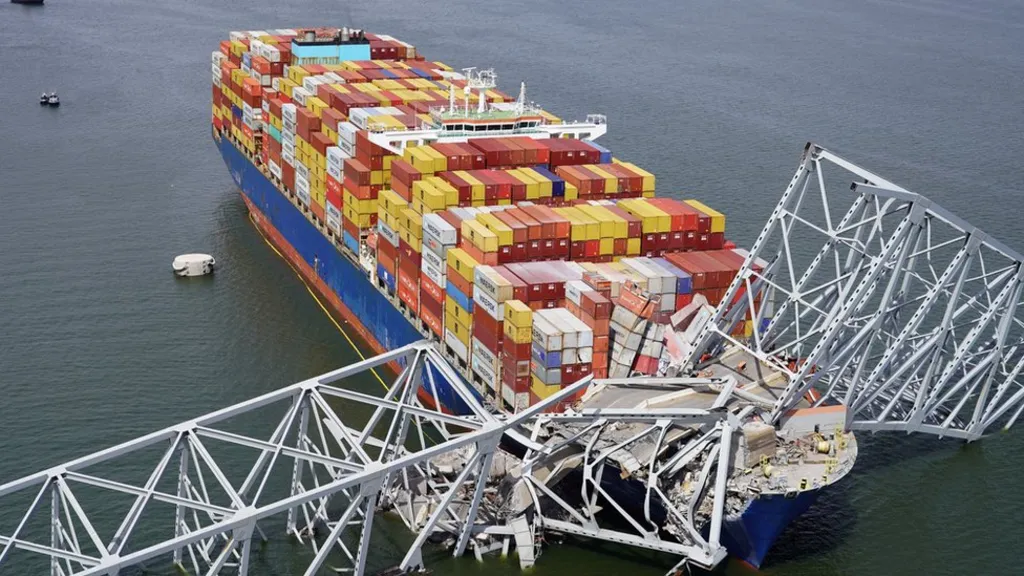The Continuing Story of the Baltimore Bridge Probe
Investigators have cautioned that it will require a substantial amount of time to untangle the events leading up to the collision between the Dali container ship and a concrete column supporting the Francis Scott Key Bridge, resulting in the bridge’s catastrophic collapse.
The bridge, stretching 1.5 miles (2.4 kilometers), collapsed upon impact, sending eight construction workers into the water. While two workers were rescued immediately, the bodies of two others were recovered on Wednesday, leaving four still missing and presumed dead.
Onboard the ship were 764 tons of hazardous materials, including sheen used in paint, some of which leaked into the Patapsco River.
The ship experienced a power failure just before the collision, and the retrieval of the data recorder on Wednesday aims to provide insights into the malfunction. Investigators have interviewed the ship’s captain, mate, and two engineers.
The investigation is expected to focus on two primary areas: the cause of the power loss and whether the bridge could have better withstood the impact.
The Power Loss: Footage from the incident indicates the Dali lost power moments before the collision, potentially leading the crew to lose control of its steering, resulting in an uncontrollable trajectory.
Investigators are exploring whether contaminated fuel contributed to the power loss, as mentioned by Jennifer Homendy, head of the National Transportation Safety Board (NTSB). Samples of the ship’s fuel have been collected for examination.
Impure fuel can cause engine and power generation issues, as evidenced by an officer’s account describing the ship losing power, steering, and electronics functionality.
Audio recordings from the ship’s black box recorder reveal the pilot’s distress call for tugboat assistance after reporting the power loss and warning of an impending collision with the bridge.
Efforts to mitigate the impact, such as steering maneuvers and dropping anchor, proved ineffective, with the collision occurring less than three minutes later. The massive size and momentum of the Dali, comparable to three football fields, contributed to the severity of the impact.
Bridge Design: Transport Secretary Pete Buttigieg highlighted that the Key Bridge, completed in 1977, was not designed to withstand a direct impact from a vessel of the Dali’s size, weighing about 200 million pounds (90,700 tonnes).
Design standards at the time did not anticipate today’s larger vessels, rendering the bridge vulnerable to such collisions, according to Norma Jean Mattei, a former president of the American Society of Civil Engineers.
Experts noted the absence of protective measures such as fenders and dolphins around the bridge piers, which could have mitigated the impact.
Despite the bridge’s satisfactory condition, it lacked redundancies, a design flaw according to Ms. Homendy, making it susceptible to collapse if a segment failed.
Looking Ahead: Resolve Marine, known for its involvement in containing the Deepwater Horizon oil spill, will lead efforts to salvage and remove the Dali ship, facilitating the restoration of the waterway for shipping.
In the aftermath, bridge owners globally will reassess safety measures to prevent similar disasters, emphasizing the importance of learning from such incidents to enhance bridge design and construction practices.

















